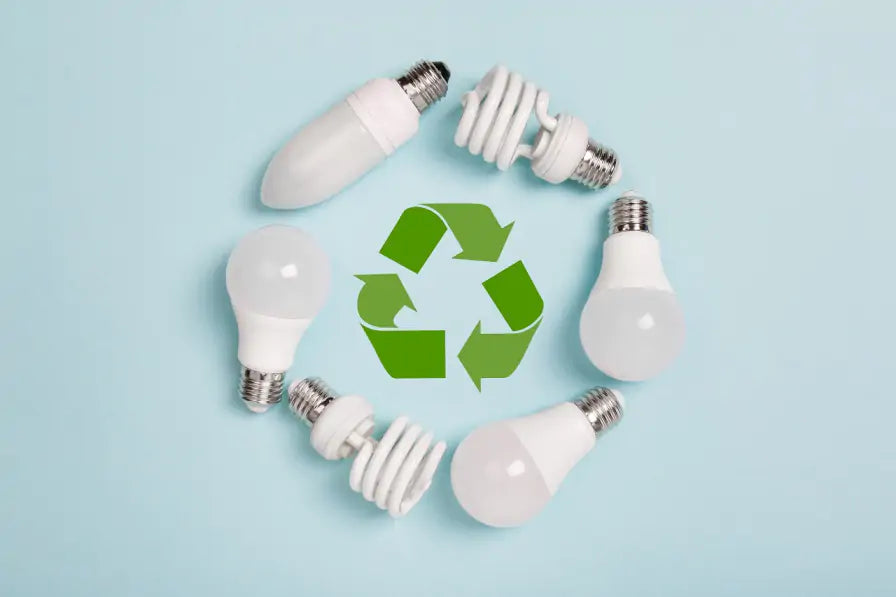Your basket is currently empty.
Shop NowThe Challenge of Recycling LED Lamps

The Challenge of Recycling LED Lamps
Lightbulbs are vital in our homes and businesses, and they are easy to replace and quite cheap to buy. But lightbulbs are changing. In recent years, their design has changed from the simple incandescent light bulbs (now banned in the EU because they are so inefficient) to low energy and LED bulbs which last longer.
With LED bulbs comes the challenge of recycling the raw materials that go into making these bulbs, such as the rare metals gallium and indium. Work is now getting underway to identify solutions.
LED lamp waste levels are currently low
LED lamps are still relatively new, and they last longer, so few have reached the waste stream yet. Of over 6000 tonnes of lamps that were collected and recycled UK-wide in 2016, only 1% were LED lamps.
What happens to waste LED lamps now?
The Agency of Design, who help organisations develop better products and better ways of doing things are looking at how the LED bulb and other lighting technologies could be redesigned to reduce dependency on rare raw materials and to make them easier to recycle.
They say that the challenge is that these light bulbs are so small that people tend to just throw them away. A small item does not justify a trip to an electronics recycling point or dump for many people. They added that they hope to create a closed loop system which will take consumer behaviour into account.

What does the agency plan to do?
They want to move away from the current electronics recycling system which is rife with contamination, because products contain so many different raw materials. Many consumers and business can’t distinguish between LED and fluorescent lamps and bulbs, so they dispose of them together. When they arrive at recycling plants, the materials are separated.
The challenge of recycling LEDs
Manufacturers of LED lamps use many different materials and designs to make products more flexible and adaptable for the consumer, though this is exactly what poses a problem for recyclers. The materials present in LED lamps can include glass, metals, plastics, ceramics, foams, glues, and more, which means they are inherently more difficult to recycle.
Possible solutions
The agency is looking at developing a product with an established take-back procedure, so it goes straight back to the manufacturer. Currently there is no motivation for business to make their products easier to recycle as there is no direct benefit for them. The final details are yet to be worked out, but one idea being considered is creating a light bulb that is connected to a Wi-Fi network, so it can tell a supplier that a bulb is about to fail, and they can send a replacement and collect the old bulb. This will make them far easier to recycle.
The notion behind this idea is not new. Philips manufactures a connected light bulb that lets you control your lighting from your phone or tablet, and other companies have take back schemes for electronics and other items, but as yet, no system combines the two ideas.
Another possible solution is a system where instead of buying light bulbs, customers pay a monthly or annual fee that entitles them to a certain number of bulbs, free replacements, usage data, and a take back service.
The agency is producing a feasibility study, which will decide whether the redesign of LED bulbs and the new service model could work. If they decide that it’s feasible, they’ll start working with manufacturers and working on securing more funding to develop their ideas further.




